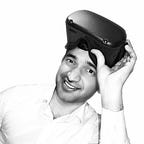High-end Photogrammetry | Using Spider 3D Scanner
As we started photogrammetry process using Metashape, we realized that we were missing details of the models. So, we used an industry scanner for photogrammetry — Spider 3D scanner. Fortunately, we had access to it through the resources at Parsons School of Design. Otherwise, this scanner is very expensive to use for prototyping.
Spider 3D is used to develop small-size accurate 3D models. For precision scanning, it requires appropriate physical setup and a powerful computer running its software. This includes a software being run on a computer with at least 16GB RAM and recommended GPU of Nvidia GeForce 400 Series or higher with 1GB of memory. Simply put, these system configurations come with a price range of over $1500.
Spider 3D works by taking a sequence of images of the object in front of it, and processing that in its software to generate a 3D model. Visually, it looks like a strobe of bright flashlights falling on the object with crude outlines of the target being displayed inside the software. Since the functionality is built around capturing images, proximity from the sensor plays a key role in scanning the object — too close and the scan will misalign, too far and it will restart its capture.
Setup
Once the device is set up and plugged-in, we go through the following process to obtain the 3D model:
Step 1: Place the model on a turntable in an orientation that exposes maximum details.
Step 2: Scan the model from all orientations and sides using the scanner to capture maximum details. See the amount of surfaces captured on the software.
Step 3: Flip the object and scan the bottom part of the model using Steps 1 and 2.
Step 4: Combine both the meshes that are formed in the software manually to match the original object. There is an “Auto-pilot” feature to assist in this process.
Step 5: Clean the unnecessary noise that was captured during the scan. This includes the surrounding environment that may have been captured.
Step 6: Simplify the mesh by reducing the number of triangles.
A summary of meshes — 3D models are built on a mesh system. Think of it as pixels in an video. The more the number of pixels, the better quality (1080p, 4K, 8K, etc), and the higher the size of the clip. Similarly, the more the number of meshes, the detailed the 3D scan, the higher (and more complex) the 3D model.
Step 7: Export the file as .obj or .fbx (OBJ, short for object, and FBX, short for filmbox are the two file formats most commonly used, and accepted by every 3D program).
Some of the models that are created using Spider scanner
Challenges
Model scan: Scanning the model takes time and patience as it doesn’t happen in one go. Maintaining the orientation and position of the scanner in order to have the model in the frame of the scan takes effort.
Combining meshes: Scans should be done in a way that it is easy to identify the points where the meshes can be combined to obtain the complete object
Mesh resolution: Higher mesh resolution gives better surface finish but takes up a lot of processing time where as lower mesh resolution would be opposite. Higher mesh resolution models would also effect the performance of other software when the models are imported and used.
Texture: We should carefully select the options in the Spider software beforehand to ensure the texture is captured or else we would not have the colored texture of the material when we export the model from the software.
Conclusion
Overall the process of scanning and processing the 3D models through this method is laborious and time consuming. But if the priority is to get high resolution models, this method is definitely worth pursuing. There are other cheaper alternatives that have simplified process, but they compromise the quality of the scan.
